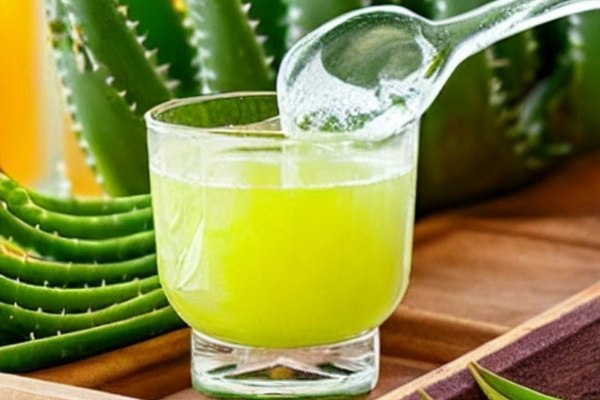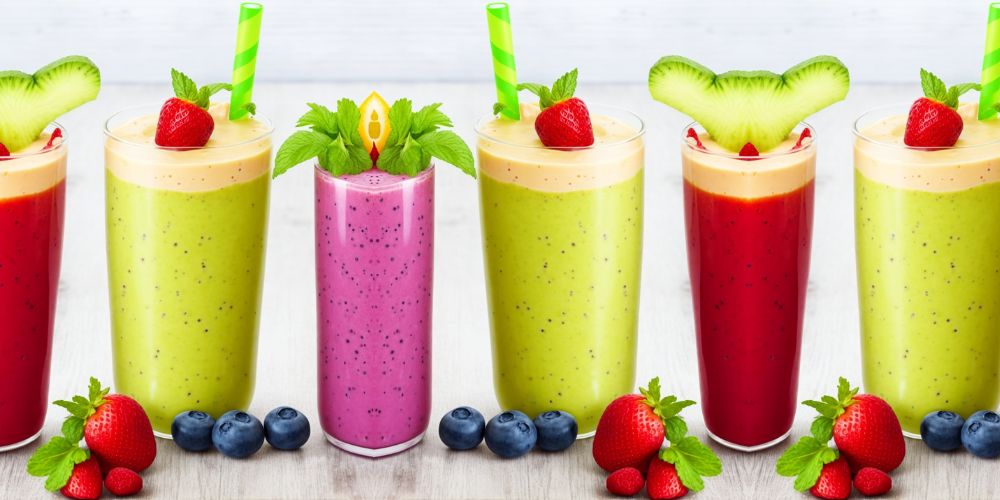Aloe Vera Juice: Inner Fillet Vs Whole Leaf – Guide


Aloe vera juice has been used for centuries to treat a variety of ailments. Its healing properties have been known and celebrated for generations, but with so many options on the market it can be difficult to decide which one is best for you. Is whole leaf aloe vera better than inner fillet? In this article we’ll explore the differences between these two types of aloe vera juices, as well as their respective benefits and drawbacks.


The inner fillet of an aloe vera plant contains some of its most potent healing ingredients, including vitamins A, B12, C, E and folic acid. It’s also high in calcium, magnesium and other important minerals that help boost immunity and improve overall health. While whole-leaf aloe vera might not offer quite as much nutrition as the inner fillet does, it still offers plenty of beneficial ingredients such as polysaccharides and glucomannan which promote digestive health.
So what are the advantages and disadvantages associated with each type of aloe vera juice? We’ll answer this question in detail throughout this article so you can make an informed decision about which product is right for you. Read on to learn more about inner fillet versus whole leaf aloe vera juice!
Definition Of Aloe Vera
Aloe vera is a succulent plant with an illustrious legacy. It has been prized for its healing properties since ancient times and continues to be widely used in modern medicine as well, from skin care products to medicinal supplements. Its scientific name, Aloe barbadensis miller, reflects its prevalence throughout many nations across the world.
The leaves of this tropical perennial have a pulpy texture that makes them easy to extract their juice and gel-like contents. The clear liquid inside contains numerous nutrients beneficial for human health, including vitamins A, B1, B2, C and E as well as minerals like calcium, potassium and magnesium; phytochemicals such as anthraquinones, lectins and flavonoids; enzymes like aliiase or amylase; polysaccharides; and organic acids like citric acid.
Aloe vera’s capacity to heal and nourish has made it popular among traditional cultures around the globe – so much so that people often grow these plants at home in order to reap their benefits without relying on commercial products. With its strong nutritional profile, there are plenty of reasons why we should consider adding aloe vera juice or whole leaf into our diets.
Nutritional Benefits Of Aloe Vera Juice
The nutritional benefits of aloe vera juice are numerous. It has anti-inflammatory effects, helps to regulate digestion and metabolism, provides essential vitamins and minerals, and is a rich source of antioxidants. Additionally, it contains enzymes that can assist in the breakdown of proteins and fats.
Aloe vera juice made from the inner fillet of leaves offers more concentrated nutrition than the whole leaf version. This type of juice will contain greater amounts of beneficial phytonutrients including polysaccharides, anthraquinones and glycoproteins. These components help reduce inflammation and boost immune system functioning while also providing pain relief for conditions such as arthritis or digestive issues.
Inner fillet juice also contains higher concentrations of dietary fiber which may aid in weight loss by increasing satiety levels between meals. Furthermore, this form of aloe vera juice may be helpful in controlling blood sugar levels due to its low glycemic index rating making it an ideal choice for diabetics. The next section will discuss the components found within inner fillet aloe vera juice.
Components Of Inner Fillet Juice
Inner fillet aloe vera juice is a product made from the inner parts of the aloe plant, which are also known as the leaf pulp and gel. The inner part of the leaf contains a range of compounds that can provide health benefits such as aiding digestion, boosting immunity and helping to reduce inflammation. Here are some components found in inner fillet juice: * Vitamins – Inner fillet juice contains vitamins A, B1, B2, B6, C and E. * Minerals – Calcium, magnesium, zinc and potassium can be found in inner fillet juice. * Amino Acids – These include lysine, arginine, histidine and cysteine. * Enzymes – These enzymes help break down food into smaller molecules for absorption by the body. * Polysaccharides – This group includes mannose and glucomannan which may have anti-inflammatory properties. Overall, inner fillet aloe vera juice has many beneficial components that contribute to its healthful qualities. It’s important to look out for products with high quality ingredients when purchasing this type of beverage. Next we’ll take a look at what makes up whole leaf aloe vera juice.
Components Of Whole Leaf Juice
Whole leaf aloe vera juice is made from the entire leaves of the plant, including its thick rind. The inner fillet and gel inside the leaves contain natural compounds that are beneficial for health, such as vitamins A, C and E, minerals like calcium, magnesium and zinc, and antioxidants. Furthermore, it contains anti-inflammatory substances called polysaccharides which can help reduce inflammation in the body. Whole leaf aloe vera also has a unique taste due to its high concentration of amino acids.
The process of making whole leaf juice requires squeezing or crushing the leaves to extract their juices. This method preserves all of the nutrients present in the leaves while providing maximum flavor and nutrition benefits. Additionally, this extraction method helps retain a higher level of active enzymes than traditional grinding techniques used with other types of beverages or supplements.
In comparison to inner fillet juice, whole leaf aloe vera juice offers more nutritional value because it includes all parts of the plant’s leaves. It also retains antiglycemic properties due to its low glycemic index rating. As a result, drinking this type of beverage can be beneficial for people with diabetes or those trying to manage their blood sugar levels naturally. With these advantages in mind, transitioning into differences in extraction processes between inner fillet juice and whole leaf juice makes sense.
Differences In Extraction Processes
Aloe vera juice inner fillet and whole leaf are two versions of the same plant, but the extraction process for each is quite different. The inner fillet version requires that the leaves be cut open and the gel-like substance from between the layers scooped out. This substance then has to be blended together with water until it becomes a smooth liquid product. On the other hand, extracting aloe vera juice from whole leaves involves crushing and pressing them so that their juices can be extracted without having to break open any of the cells in the leaves.
The difference in these processes affects both how much nutrition remains intact after processing and also how quickly they can be made into consumable products. For example, because the inner fillet must go through several steps before being ready for consumption, it often retains more vitamins and minerals than when using whole leaves. Furthermore, since no cutting or blending is needed when extracting from whole leaves, this type can generally be processed faster than its counterpart.
Thus, while there may not always be a clear answer as to which option is better overall, it’s important to understand how each one differs in terms of preparation methods and nutritional content before making your choice. From here, we move on to looking at taste comparisons between aloe vera juice inner fillet versus whole leaf.
Taste Comparison
Now that the extraction processes between aloe vera juice inner fillet and whole leaf have been explored, it’s time to take a look at how they compare in taste.
The inner fillet of an aloe plant is typically more bitter than its leaves due to higher concentrations of aloin compounds, which are known for their laxative effects. This means that juices made from the inner fillet can often be quite tart and acidic – making them less appealing for those who prefer sweeter drinks. On the other hand, juices made from whole leaves tend to be much milder in flavor as well as smoother, with notes of sweetness coming through from natural sugars present in the plant’s pulp or gel-like substance. Whole leaf products also provide additional benefits such as fiber content and polysaccharides.
In comparison, it may seem like the choice between inner fillet and whole leaf comes down to personal preference when it comes to taste alone. However, consumers should keep in mind that there are still other factors at play like quality control, health benefits, cost effectiveness – all of which will influence their decision too. With this in mind, let’s move on to comparing these two types of aloe vera juices based on cost.
Cost Comparison
An interesting statistic when comparing the cost of aloe vera juice inner fillet and whole leaf is that it can cost up to seven times more for an equal amount of inner fillet than it does for a similar sized container of whole leaf. This difference in price has led many consumers to opt for the less expensive option – whole leaf – instead.
When looking at individual containers, however, there are some additional factors to consider beyond just price. For example, with filleted aloe vera juice you get a much higher concentration of active ingredients like polysaccharides which provide natural anti-inflammatory benefits. On the other hand, due to its lower concentrated form, it’s possible that one might need to drink significantly more servings of the whole leaf version compared to the inner fillet in order to reap the same benefits.
Considering all these variables together will help shoppers decide which type of aloe vera juice best fits their needs and budget. With this information they can move on confidently towards understanding recommended intake amounts.
Recommended Intake Amounts
When considering the differences between aloe vera juice inner fillet and whole leaf, it’s important to look at recommended intake amounts. To get the most out of your aloe vera juice:
- Inner Fillet:
- Start with 1 ounce (30ml) a day for up to one week; after that increase gradually to no more than 2 ounces (60ml).
- Increase drinking frequency if desired, but keep daily consumption under 4 ounces (120ml).
- Due to its laxative properties, do not exceed 4 ounces per day.
- Whole Leaf:
- The general recommendation is 16-32 fluid ounces (500-1000 ml) per day for 3 days or less; any longer should only be done under physician supervision.
- If taking multiple times during the day, divide total amount into smaller doses throughout the day.
- Increase gradually as needed until desired effect is achieved.
It’s best to take aloe vera juice on an empty stomach once in the morning and/or evening. With either type of aloe vera juice, it’s important to follow package instructions carefully and consult your healthcare provider before beginning use especially when using larger quantities over extended periods of time. This will help you safely identify which intake amount works best for you. As usage can vary depending on individual needs and goals, this transition leads us into our next section about potential side effects associated with aloe vera juice use…
Potential Side Effects
Having discussed the recommended intake amounts of aloe vera juice, it is important to consider potential side effects. It is worth noting that aloe vera juice can cause mild digestive issues like diarrhea or gas when consumed in large quantities. The inner fillet and whole leaf versions may react differently within an individual’s body, so it is best to take note of any changes experienced from either type.
Some people are more sensitive to aloe vera than others and may experience skin irritation if it comes into contact with their skin for a prolonged period of time. Additionally, those who are pregnant or nursing should not consume aloe vera without consulting a doctor first due to potential negative reactions.
It is also wise to keep in mind that some products may contain additional ingredients which could interact with medications or dietary supplements. As such, individuals should consult with a healthcare professional before consuming any form of aloe vera juice if they have existing health concerns or allergies. With this information in mind, one can now explore suggested uses for both the inner fillet and whole leaf varieties of aloe vera juice.
Suggested Uses
The joy of aloe vera juice can be found in its versatility. It’s like a chameleon, changing to fit any situation or need. Like a swiss army knife, it has many uses and applications.
Aloe vera juice made from the inner fillet is often used as part of an internal health regimen: – To boost immunity – To help manage digestive issues – To aid in detoxification and cleansing processes
It can also be added to smoothies and other beverages for an extra nutrient kick. The clear liquid with no taste makes it easy to incorporate into almost any drink without altering flavor profiles. Whole leaf aloe vera juice offers similar benefits, but has more of a grassy flavor that may not appeal to everyone’s palate.
Regardless of which type you choose, both are excellent sources of vitamins, minerals, antioxidants and amino acids – all essential components for good health. Aloe vera juice is even said to improve hydration levels faster than water alone! So why not give it a try? Who knows what hidden powers await within this versatile elixir!
Frequently Asked Questions
How Does Aloe Vera Juice Compare To Other Juices In Terms Of Nutritional Benefits?
When it comes to nutritional benefits, aloe vera juice stands out among other juices. Not only is it high in vitamins and minerals, but it also contains a variety of proteins, essential amino acids, and enzymes that offer numerous health benefits. Additionally, its anti-inflammatory properties make it an ideal choice for those looking to improve their overall wellbeing.
Aloe vera juice is a great source of many nutrients such as vitamin A, Vitamin C, calcium, magnesium, potassium and iron. It’s also rich in antioxidants which can help protect the body from oxidative damage caused by free radicals that are associated with chronic diseases like cancer and heart disease. Additionally, the natural compounds found in aloe vera juice have been shown to reduce inflammation throughout the body. This means it can be beneficial for people suffering from conditions such as arthritis or asthma.
In comparison to other juices on the market today, aloe vera offers more nutrition than most alternatives due to its unique combination of vitamins and minerals. Furthermore, the inner fillet vs whole leaf debate doesn’t matter too much when considering general nutritional value; both contain similar amounts of beneficial qualities depending on how they’re prepared. Ultimately though, regardless of whether you choose inner fillet or whole leaf Aloe Vera Juice – either way you’ll get plenty of nutrition your body needs!
Is It Safe To Drink Aloe Vera Juice In Large Amounts?
It is a common question to ask whether it is safe to drink large amounts of aloe vera juice. Like any other product, moderation and awareness are key in maintaining health when consuming this beneficial beverage. As the old saying goes: you can have too much of a good thing!
To get an accurate answer to this query, we must first understand what makes up aloe vera juice. This natural liquid contains vitamins A, B1, B2, B3, C and E as well as minerals such as calcium and magnesium – making it quite potent! It also has high levels of antioxidants which help protect our bodies from free radicals. In addition to these positive aspects, there are some potential side effects that should be taken into consideration before drinking excessive amounts of aloe vera juice.
In short bursts and moderate doses, aloe vera juice can provide several health benefits; however overindulging can cause digestive issues like abdominal cramps or diarrhoea due to its laxative properties. While not life-threatening in most cases, prolonged consumption may lead to more serious consequences if the body doesn’t receive enough essential nutrients. Therefore caution should always be exercised when deciding how much aloe vera juice one should consume on a regular basis – just remember that everything in moderation is key!
Does The Extraction Process Affect The Taste Of The Aloe Vera Juice?
When it comes to aloe vera juice, the extraction process can make all the difference in taste. Many people find that filleted or processed juices have a milder flavor than whole leaf juice. But does this mean one type is better than the other? Let’s explore what factors affect the taste of aloe vera juice and how the different methods of extraction play into them:
- Texture: Both inner fillet and whole leaf juices offer smooth textures but differ slightly in their consistency. Inner fillets tend to be thinner because they don’t contain any pulp or pieces of plant material, while whole leaf juices are thicker due to its higher fiber content.
- Color: Whole leaf juices are darker green than inner fillet juices because they haven’t been filtered as much during processing. This makes them appear richer on sight and therefore more appealing for some consumers who prefer an aesthetically pleasing beverage.
- Nutritional Content: Although both types of aloe vera juice may contain similar amounts of vitamins and minerals, there might be variations in concentrations depending on how it was extracted from the plant leaves or stems. For instance, outer layers that are still present in whole-leaf extracts may provide additional antioxidant benefits compared to inner filleted versions which have had those parts removed during manufacturing.
- Taste: Ultimately, taste will vary based on personal preference but many report that inner filleted aloe vera has a lighter and sweeter flavor profile compared to its unprocessed counterpart which could be described as having more herbal notes with slight bitterness at times. Additionally, adding sweeteners or fruit flavors can help balance out any potential aftertastes associated with either method of extraction too!
No matter what kind you choose, getting your daily dose of aloe vera juice should come down to individual tastes buds rather than nutritional value alone since both options offer benefits when consumed regularly. So if you’re looking for something light yet refreshing then opt for inner fillet whereas if you’d rather go for something hearty with earthy tones then stick with whole-leaf extracts instead – it’s really up to you!
Is Inner Fillet Or Whole Leaf Aloe Vera Juice More Cost Effective?
When it comes to cost effectiveness, many people wonder if inner fillet or whole leaf aloe vera juice is the better choice. There are several factors that could make one more cost effective than the other. This article will explore some of these factors and provide an overall conclusion about which one should be chosen.
To begin with, let’s look at: – Cost of purchase: – Inner fillet – Can often be bought in bulk for a cheaper price per bottle – However, this may not always be the case depending on where you buy your product from – Whole leaf – Usually costs more per bottle as you have to pay for the additional processing and extraction steps needed to create the juice form
- Taste differences:
- Inner Fillet
- Has been filtered so has a smoother texture and less bitter taste compared to the original aloe vera leaves
- Whole Leaf
- Is made using all parts of the plant which makes it more potent but also means there can sometimes be an unpleasant bitter aftertaste
- Nutritional content:
- Inner Fillet
- Contains fewer nutrients due to its filtering process
- Whole Leaf
– Retains most of its natural vitamins and minerals as nothing has been removed during production.
After analyzing each factor, it becomes clear that both types of aloe vera juice offer different benefits when considering cost effectiveness. The inner fillet option tends to be cheaper upfront but may lack nutrition whereas whole leaf is usually more expensive but provides more health benefits. Ultimately, choosing between them depends on what you’re looking for in terms of taste and nutritional value.
Are There Any Health Benefits Associated With Drinking Aloe Vera Juice?
The question of whether drinking aloe vera juice has any health benefits is an intriguing one. It’s like asking if a miracle elixir exists that can hydrate and nourish the body at once, while also offering therapeutic properties to heal from within. The answer is that yes, there are many potential health advantages associated with consuming this mysterious drink.
Aloe vera juice contains numerous vitamins and minerals, including Vitamins A, B12, C and E; calcium; magnesium; zinc; selenium; potassium; amino acids; enzymes and more. This combination makes it a powerful source of antioxidants which may help reduce inflammation in the body as well as improve digestion by breaking down food particles for better absorption. Additionally, some studies suggest that drinking aloe vera juice on a regular basis could potentially boost the immune system, balance blood sugar levels, increase energy production and even protect against cancerous cell growth.
Given its impressive nutrient content and possible healing effects, it’s easy to see why so many people have turned to this natural remedy over commercially produced drinks or supplements. Of course, further research needs to be conducted in order to fully understand how exactly aloe vera juice affects our bodies – but until then you can rest assured knowing that adding it into your diet might just offer up some unexpected rewards.
Conclusion
In conclusion, aloe vera juice is a unique and highly beneficial beverage. It can provide vitamins, minerals, antioxidants and anti-inflammatory properties that are not found in many other juices. The extraction process does not significantly affect the taste of the juice or its nutritional content; however, inner fillet aloe vera juice tends to be more cost effective than whole leaf. Furthermore, drinking larger amounts of aloe vera juice has been known to bring multiple health benefits such as improved digestion and immune system support. As we’ve seen, this ‘miracle’ elixir is truly something special – it’s like liquid gold for our bodies! So if you’re looking to reap all the incredible benefits aloe vera juice has to offer, go ahead and give it a try – you won’t regret it!







